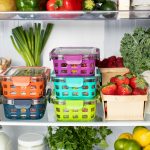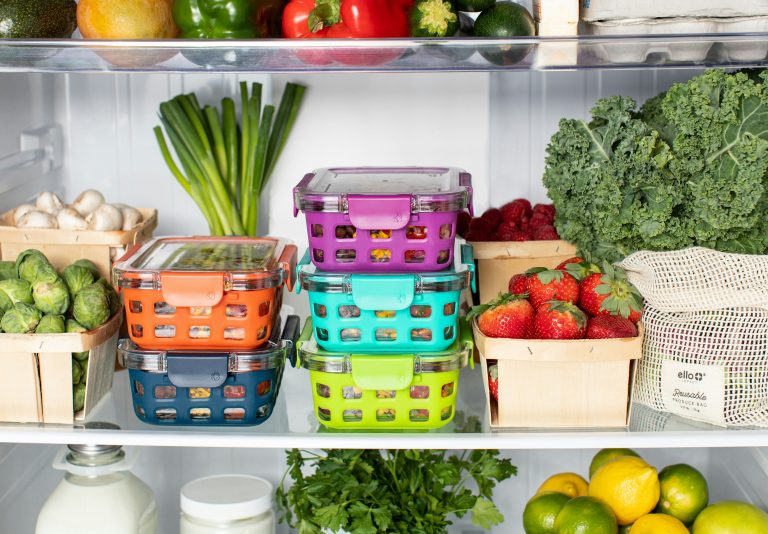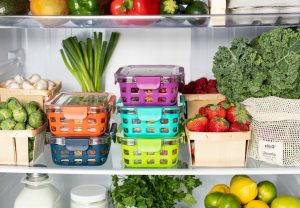Like many readers, I have noticed a significant rise in grocery prices for our family.
One particular afternoon, I was expecting an online grocery delivery. We missed the truck with school pickup. When we arrived home, I only saw a small number of bags by the door.
I was about to call to let them know that they left half of my order on the truck when it hit me. This is just what $300 of groceries looks like now. It barely looks like anything.
I still remember when a block of cheese was $6, then $6.60, then suddenly jumped to $11. 500g of butter used to be a few dollars, then jumped to $7. I now pay over $7 for one cup of cocoa. Baking in the kitchen used to be a way to save money, but this is no longer the case.
Although there is no magic trick to avoid rising grocery costs, there are some steps we can take to save money. Here are some ideas.
Shop with intention
We save money when we shop with a plan. Before shopping, spend a few minutes on a fridge and freezer audit. What do you need to use up? What didn’t get eaten that you could skip this week? Check your pantry to see what you are running low on. Write a list and stick to it as closely as you can.
Pay in cash
Studies have shown that we save money by paying in cash. The simple reason? We have a physical connection to parting with your hard-earned money. When we pay in cash, it hurts more than paying with the tap of a card. Consider withdrawing money next pay to spend on groceries and see if it changes your spending habits.
Involve your children
Set aside a small amount of time each week to meal plan together. Each person could pick a meal of their choice to give them ownership. Depending on their age and your schedule, children can help to cook and serve up the meal. You can increase their responsibility as they get older.
Fewer top-up shops
Top-up shops can add up quickly. Avoid racing out to the shops by keeping a stocked pantry with plenty of long-life milk and canned items. Buying extra when items are on special can help. Keep extra bread in the freezer. Having a few dozen eggs in the fridge can create a quick dinner.
Source healthy food
When you have time, heading to the market can be a great way to source healthy food for your family. Give each child some money to spend on ingredients for a meal or to add to soup. Even if you can’t go regularly, making it a special outing can be a fun learning experience.
Avoid hiding vegetables
Hiding veggies in meals might feel like a quick win, but in the long term, your child might be suspicious of what is hiding inside their food. Consider preparing two versions of the same meal. One might contain onions and veggies, and one plain. Offer raw vegetables on the side to be eaten separately.
Have routines
Implementing routines can make family life run smoothly. Use ideas like:
- Make your own Mondays (hamburgers, cold rolls, nachos)
- Taco Tuesdays
- Pasta Wednesdays
- Fish and Chip Thursdays
- Fakeaway Fridays
- Leftover Saturdays
- Pizza Sundays
Meat free
One way to keep grocery prices down is to reduce the amount of meat we consume. Going meat-free once or twice a week is good for our budget and good for our health, too.
Keep it simple
When I worked as an au pair in England, the family had some good routines. They had pasta pesto every Wednesday night before Scouts. It was simple and cheap, using a home-brand jar of pesto.
They had grated cheese and a basic salad on the table. Everyone ate it. It was a winner.
Prep days
If you’re anything like me, you prefer to spend time outside the kitchen. Set aside one morning, afternoon or evening each week to prepare some meals. Work hard to prep food in advance to save you time on other days.
Leftovers
Cook once, eat twice. Leftovers can save us both time and money. Plan one or two nights a week for leftovers. If you’d rather not eat it again the next evening, take it for lunch the next day.
Breakfast for dinner
The simplest meals are often a novelty for children. Not only do they save time but money too. Consider serving up:
- pancakes with various toppings
- toast
- cereal
- scrambled eggs
- boiled eggs with soldiers
- omelettes
- French toast
- Poached eggs and bacon
Recipe Books
If you don’t already, put together a family recipe book. Have it readily available for your family members to access.
Older children and teens can use a display folder to make their own version. Handwrite or print out recipes that you love.
Consider buying some recipe books that make you want to cook more. We love our Simple Home Edit one – those recipes are always incredible! Nicole’s new book is worth ordering.
Veggie chips
Making veggie chips are a way to get more veggies into your little ones. We love doing kale, sweet potato and zucchini chips. They are happy to dip them into tomato sauce but hubby and I prefer aioli.
We would like to get an airfryer soon to help make these taste crunchier.
Special foods
Consider cooking special foods on the weekend. These create memories and make food fun!
- Watch a cooking show for inspiration
- Let your child or children plan a special meal, write out a menu, set the table and serve up the plates.
- Cook outside on the fire (damper, nutella toasties, BBQ meat, pizza, cinnamon apples, marshmallows)

All help out
If you’re anything like me, you want your children to do more around the house. This helps to ease your load (in theory!) and can help to foster a sense of gratefulness for what you normally do.
When children understand how long it takes to prepare a meal, how long it takes to clean up and how much ingredients cost, it can adjust their mindset. This doesn’t happen immediately, but long term it has wide reaching benefits.
Some families have values and expectations printed on their wall. They regularly talk about the importance of all pitching in.
As a mother of semi-reluctant helpers in this area, I encourage you to pick your battles. This might be easier to focus on during weekends and holiday breaks when we might have more time.
Children can have set jobs or these can be on a roster. Things like:
- set table
- load dishwasher
- empty dishwasher
- clear table
- wash dishes
- dry dishes
Lunchboxes
Packing lunchboxes and snacks for our children can cost a sizeable amount. Perhaps it’s time to get back to basics. Think back to your childhood or ask your parents what was in theirs. Perhaps a piece of fruit like an apple, a muffin or biscuit, muesli bar, carrot sticks and a sandwich.
There is too much pressure on parents to pack the perfect lunchbox. You can keep it nutritious and delicious but don’t go overboard. Is it important for children to have nutrition? Of course. Just keep in mind that it is only one meal of the day, plus some snacks.
Some children feel like they have to eat everything in their lunchbox. They sit outside their classroom eating while their friends run off and play. By the time they’re finished, it’s hard to find where their friends are playing and there isn’t much time left.
I often pack more than I think my children will eat but remind them that they don’t have to eat it all. I pop a few extra packets in so they don’t go squashy or stale if not eaten (and I can put them back in for another day).
Ask them to choose some items at the shop or cook some things together when you have time. Ask them to help pack it. This way, they can’t complain about what they get.
If packing a lunchbox brings you joy and you have time to spend on this, by all means, continue! That’s great. It’s just not for everyone. There’s nothing wrong with a basic lunchbox.
Buy
Sometimes when we purchase a new appliance or cooking tool, it can make our cooking experience easier. It can even save us money in the long run. This could look like:
- A learning tower or step stool to keep children safe at the kitchen bench top
- An air fryer to cook crunchy meals
- A bread maker to set before going to bed so you wake up to the smell of freshly baked bread.
- A Thermomix to create food from scratch and enable your child to follow guided recipes. (I love our Thermomix so much, I wrote an article about 88 reasons why you should buy one…!)

Fakeaways
After a busy week, we need an easy option by Friday night. Fakeaway (aka fake takeaway) saves money. It could look like oven pizza, chicken nuggets, spring rolls, garlic bread, hash browns or oven chips. These can be bought premade or made ahead of time and frozen.
One of our family favourites is KFC chicken. We use the Krispy Fried Chicken Cookidoo recipe to make it in our Thermomix. I prep it in advance, put it in the fridge and deep fry it just before dinner. With a gluten allergy in our family, we aren’t able to have the real version. This helps us feel like we’re not missing out. It’s delicious every time.
Grow herbs and veggies
Growing your own food helps to save money on groceries and teaches children about where food comes from. If planting a veggie patch is too much right now, start with some herbs.
Choose a few that you use regularly, for example, sweet basil in spaghetti, coriander for butter chicken and parsley as an all-rounder. Pot some up or put directly into the ground. It’s wonderful having fresh herbs on your doorstep and using them in daily cooking.
Buy these from your local garden store, supermarket, Bunnings or even ask a friend or neighbour if you could have a cutting.
Managing food for a family is no small feat. Be encouraged that you are doing the best you can.
- Don’t aim for perfection
- Build in routines to make life easier
- Find shortcuts so it’s not all on you
- Find one way to save money
- Be kind to yourself – it’s a big job!
Melanie Wegener
Not an expert. Has been seen bribing one of her children with a cooking chocolate chip if they licked a new food.
An excerpt from this article has been published in Kiddo Mag. Read it here.
















